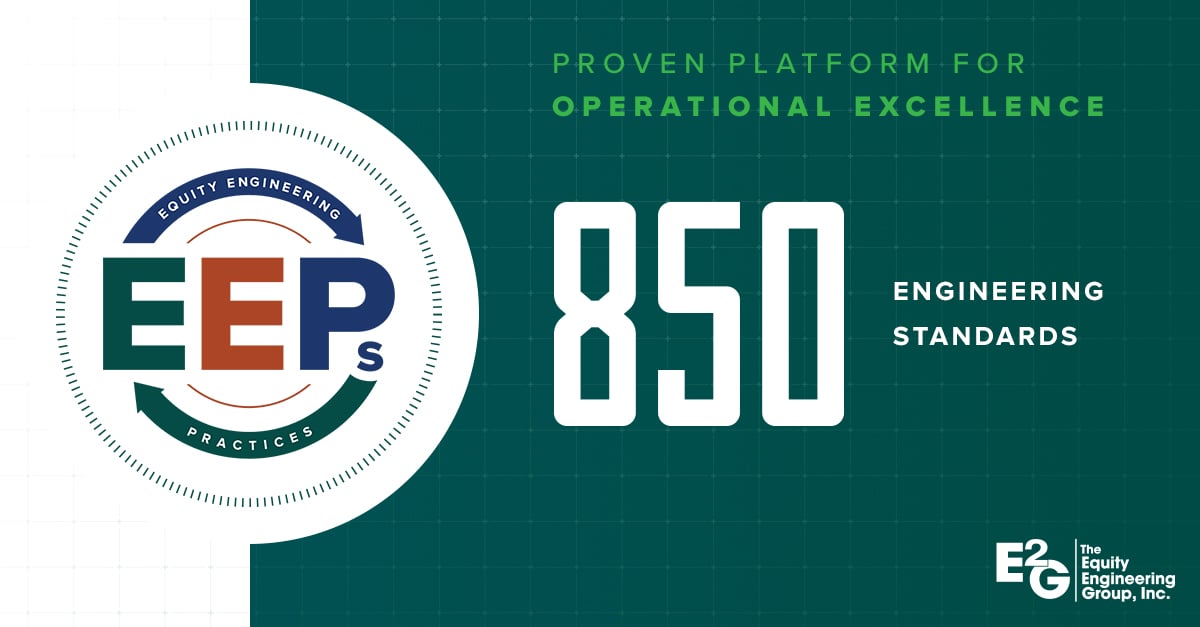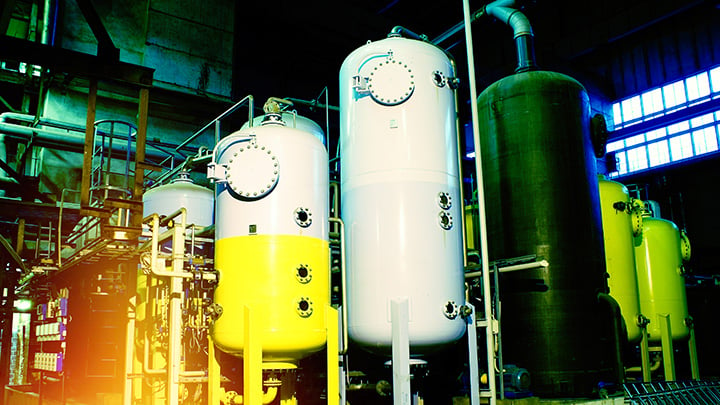Economic Evaluation Techniques for Inspection/Repair/Replacement Decisions on Plant Components
Enhanced Fitness for Service Evaluations
Fitness-for-Service Evaluation: What's In It For You?
Improving the Cost Effectiveness of Advanced NDE Applications
Methods for Detection, Characterization & Quantification of High Temperature Hydrogen Attack
Addressing Gusset Problems: Pipe Cracking Part 1
Characterizing Microbiologically Influenced Corrosion of Welded Alloys - Innovative NDT Techniques
Industries Seek United Support for Joint NDE Project Under PERF Umbrella
Inspection of Glass-Lined Equipment - A Refresher
NDE for Lifetime Extension and Increased Reliability for Refinery Structures
New Inspection Tool - Corrosion Under Insulation
An Engineering Critical Assessment of a Service-Damaged Pressure Vessel
API Committee on Refining Equipment - Benchmarking Survey Results - Pressure Equipment Inspection
Erosion/Corrosion Wear Detection for Fossil Power Plants at Pacific Gas and Electric Company
Inspection Data Management: The Connection With RCM (Reliability Centered Maintenance)
Remote Internal Inspection of Coke Drums
So You are Considering On-Stream Inspection Technologies... Have You Thought it Through?
Back to Basics: Keys to establishment of an effective inspection program
Comparison of the API-510 Code and NBIC
Considerations in the Assessments of Welded Hot Reheat Pipework
Corrosion Under Insulation: I Wonder What's Going On Under There?
Maintenance, Mechanical Integrity, and OSHA
OSHA PSM Citations for Mechanical Integrity
Rotating Laser Profilometry Adapted for Use in Convection Furnace Tubes, Boilers and Fin-Fan Coolers
1995 Inspectioneering Journal Article Index
A key to any piping evaluation program is to understand where problems can occur. Vibrating piping can propagate a crack relatively quickly. Have you ever installed gussets to stabilize a vibrating pipe situation only to find, shortly thereafter,...
Petrochemical and energy utility industries require a methodology which will allow them and the governing regulatory authorities to make technical and financially sound decisions for the repair or replacement of pressure vessels which suffer damage...
Late in 1994, the API surveyed their committee on refining equipment members in order to provide benchmarking information on the extent of Pressure Equipment Inspection (PEI) activities and programs underway at member companies.
Never have I known or read of anyone, who sought out wisdom, to regret it, nor to help but benefit from it. Wouldn't you agree, wisdom recognizes, holds onto, operates out of and values timeless, tried and true principles that can be, and should...
Most inspection companies, including those who dabble in engineering, today, go about things in much the same way as they have in the last five to ten years. Some offer routine services at bargain-basement prices. Others provide high tech services...
Low-energy piping system failures in power-generating facilities are often the result of fouling and corrosion. These degradation mechanisms can affect the capacity of piping for fluid-carrying, the heat transfer rates of heat exchangers, and the...
As chairman of the API Inspection Subcommittee, one of the questions I often receive involves the difference between the API Pressure Vessel Inspection Code (API-510) and the National Board Inspection Code (NBIC).
For reason of economy, the hot reheat pipework in many US power plants is fabricated from seam-welded low chrome-moly carbon steel spools. Unlike girth butt welds, where the critical weldment microstructures can off-load stress to the stronger...
Corrosion is one of those "equal opportunity" hazards that affects all industries indiscriminately, to the tune of billions of dollars annually in repair and replacement costs. Some types of corrosion are readily apparent, such as rusting of...
In the aging portion of an asset's life, the failure rate is exponential. This creates a need for predictive maintenance expenditures to maintain reliability.
Equity Engineering Practices® (EEPs) are a collection of design and maintenance focused corporate standards that include >850 engineering standards, and >300 piping classes. Enhance your mechanical integrity programs, improve equipment...
Evaluations of aged and critical service vessels such as FCCU's and Delayed Cokers have been aided by the addition of two physical measurements referred to as structural characterizations. These are placed in perspective with the classic...
Eight years ago PG&E began a program for its fossil plants for early detection, repair and prevention of Erosion/Corrosion (E/C) failure mechanisms. Since its inception, hundreds of worn piping components have been detected and repaired before...
An inescapable law of nature is that engineering materials contain flaws. Perfect materials and welds simply do not exist in the real world. A newly fabricated pressure vessel, for example, contains numerous imperfections and will probably degrade...
In our inspection organizations, we have identified a number of critical success factors (CSF's) which are vitally important if we are to achieve the level of pressure equipment reliability and integrity to which we aspire. One of our CSF's is the...
Traditional pressure vessel inspections often require taking assets out of service. However, MISTRAS’ Non-Intrusive Inspection (NII) programs provide data as good or better than internal inspections, while assets remain in service. NII is...
PERF (Petroleum Environmental Research Forum), a mechanism used successfully for joint industry environmental projects, is being considered for NDE related research. Many of the same companies using the approach for environmental challenges make up...
One thing is certain - major changes in maintenance programs are being implemented in process plants. These changes are spawned by an increased demand for equipment availability, longer, safer run-times and government and industry compliance.
If it's glass-lined, chances are the environment is very corrosive to most metallics. In general, once the glass lining is breached, through-wall corrosion doesn't take very long. An effective maintenance, operation and inspection program will go...
Many promising advances are being made in inspection technologies, today. Some are going to provide opportunities for companies to maintain and increase equipment mechanical integrity, quite possibly at lower costs.
Equipment maintenance methods and philosophies continue to evolve. What has taken many by surprise is the rate of change and the sense of urgency that now surrounds issues related to Mechanical Integrity (MI) in the field of maintenance...
Nelson Curve changes in the late 1980's provided cause for Shell Oil Company to look at more reliable NDE non-destructive evaluation methods for assessment of materials/equipment in high temperature hydrogen service. The primary change motivating...
The U.S. Department of Energy's Idaho National Engineering Laboratory (INEL) is leading an industry/university/national laboratory team to develop two NDE technologies that will economically extend refinery plant lifetime while continuing to protect...
In May 1995, Omega International Technology, Inc., began testing a new system to measure pipe wall thicknesses using digital radiography (RT) scanning. This new system has the potential for being faster, less labor intensive, and shown improved...
The United States Department of Labor (USDOL) Occupational Safety and Health Administration (OSHA) standard 29 CFR 1910.119, "Process Safety Management of Highly Hazardous Chemicals," has been in effect since may of 1992. To enforce this...
In August of 1993, the hydrocarbon process industry once again experienced a catastrophic loss when a major coker unit fire occurred in Louisiana. The cause of that incident was not unlike many others that have occurred over the years throughout...
Delayed coker vessels experience severe loading sequences as they are routinely filled with hot liquid product (approx. 9000 F) and quenched to ambient temperature in a relatively short time period. The industry trend is to shorten the operating...
Over the past ten years a broad family of laser-based nondestructive testing systems has been in development. These tools are used for the inspection and measurement of internal surfaces of tubes ranging in size from 5/8-inch to 3-inches in...
With miles of piping and tons of equipment to consider for on-stream inspection or monitoring you probably have:
High energy piping (HEP) systems, main steam lines and hot reheat lines (typically low chrome molydbdenum steels), are susceptible to creep damage. Such damage can lead to leaks, and in extreme cases, catastrophic failure.
We dedicate this forum to the owners/operators of Chemical, Refining and Utility process facilities. The Inspectioneering Journal will publish articles on a bi-monthly basis. Some of the topics we will cover as they relate to mechanical integrity...
Exposure of carbon steel equipment to wet H2S service environments can lead to various forms of attack, e.g. hydrogen blistering and hydrogen induced cracking (HIC), stress oriented hydrogen induced cracking (SOHIC) and sulfide stress cracking...






















